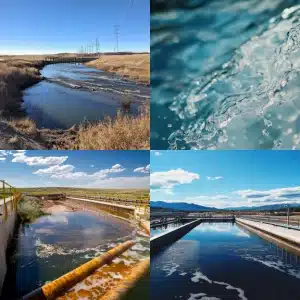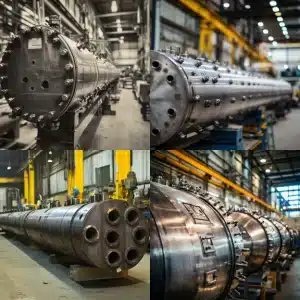
What are the common failure modes of valves?
Valves, integral components in controlling the flow of fluids in various systems, can experience multiple failure modes. Understanding these failures is essential to ensure the safety and efficiency of operations. Here are some common failure modes of valves:
- Leakage:
- External Leakage: Escape of fluid outside the valve, often from the stem seal or body gasket.
- Internal Leakage: Fluid seeping through a closed valve due to degraded or damaged seating surfaces.
- Sticking or Binding:
- Cause: Contamination, corrosion, or improper lubrication.
- Effect: The valve becomes difficult to operate, or it may become entirely immobile.
- Erosion:
- Cause: High-velocity flow or presence of abrasive particles in the fluid.
- Effect: Wear and tear of valve components, especially the seating surfaces, leading to leakage or valve malfunction.
- Cavitation:
- Cause: Rapid changes in fluid pressure, leading to the formation and collapse of vapor bubbles.
- Effect: Pitting or damage to the valve components, especially in areas with high fluid velocities.
- Corrosion:
- Cause: Reaction between the valve material and the fluid or external environment.
- Effect: Weakening and degradation of valve components, potentially leading to leaks or failure.
- Stem Failure:
- Cause: Excessive torque, misalignment, or corrosion.
- Effect: The stem may break, leading to loss of control over the valve position.
- Packing Failure:
- Cause: Incorrect packing material, overtightening, or normal wear and tear.
- Effect: External leakage around the valve stem.
- Actuator Failure:
- Cause: Electrical, pneumatic, or hydraulic issues in automated valves.
- Effect: Inability to open, close, or modulate the valve.
- Thermal Expansion or Contraction:
- Cause: Rapid temperature changes in the system.
- Effect: Misalignment or binding of valve components.
- Galling:
- Cause: Sliding contact between metallic surfaces without proper lubrication.
- Effect: Wear and potential seizing of the valve components, such as between the stem and the body.
- Over-pressurization:
- Cause: Exposure to pressure beyond the valve’s rated capacity.
- Effect: Potential deformation or bursting of the valve body.
- Elastomer Degradation:
- Cause: Exposure to temperatures or chemicals beyond the elastomer’s capacity in seals and gaskets.
- Effect: Seal failures leading to internal or external leakage.
- Seat Wear or Damage:
- Cause: Regular operation, debris in the fluid, or cavitation.
- Effect: Compromised sealing capability, leading to internal leakage.
- Improper Installation:
- Cause: Misalignment, incorrect gasket selection, or wrong installation practices.
- Effect: Reduced valve efficiency, increased wear, or leakage.
- Material Incompatibility:
- Cause: When pressure vessel manufacturers don’t adequately consider the media or environment in which the valve operates.
- Effect: This can lead to accelerated corrosion, erosion, and wear. For instance, a valve designed for water service might fail prematurely if exposed to acidic or basic solutions.
- Design Flaws:
- Cause: Pressure vessel manufacturers may sometimes overlook specific application requirements, leading to design inadequacies.
- Effect: Such oversights can result in issues like turbulence, premature wear, or even catastrophic failures if the valve can’t handle the system’s pressures.
- Inadequate Testing:
- Cause: Insufficient quality control by the pressure vessel manufacturer during the production phase.
- Effect: Valves might have hidden defects or weaknesses that only manifest under operational conditions, leading to unexpected system downtimes or safety concerns.
- Maintenance Overlook:
- Cause: Neglecting regular inspections and maintenance, sometimes due to a false sense of security provided by high standards set by pressure vessel manufacturers.
- Effect: Wear and tear go unnoticed, and the likelihood of failure increases.
- Improper Sizing:
- Cause: A mismatch between the valve’s size and the system’s requirements, which can arise if a pressure vessel manufacturer doesn’t provide clear specifications or if the end-user misinterprets them.
- Effect: Reduced flow efficiency, excessive pressure drops, or even valve damage due to over-pressurization.
- Faulty Actuation Mechanisms:
- Cause: Defective or inadequate actuators provided by the pressure vessel manufacturer.
- Effect: Automated valves may not operate as required, leading to control issues or safety hazards.
- Environmental Factors:
- Cause: External conditions like high humidity, saline environments, or temperature extremes, which might not be factored in by the pressure vessel manufacturer.
- Effect: Accelerated corrosion, elastomer degradation, or mechanical failures due to material contraction/expansion.
- Operational Errors:
- Cause: Human errors in handling or operating the valve, especially if instructions from the pressure vessel manufacturer are unclear or not followed.
- Effect: Accidental over-torquing, improper cycling, or other mishandlings can damage the valve or compromise its performance.
In the realm of pressure vessels, the quality, reliability, and durability of valves are paramount. Faulty valves can compromise the integrity of the entire pressure system, posing potential safety risks. Hence, pressure vessel manufacturers must place significant emphasis on the design, production, and testing of valves. Additionally, end-users and maintenance teams should be well-informed and trained about proper installation, operation, and upkeep practices. Collaborative efforts between pressure vessel manufacturers and users can ensure that valves function optimally, thereby safeguarding the longevity and safety of the entire system.
Related Blog Post
- Understanding Desiccant Dryers: Key to Optimized Air Quality in Industrial Applications
- What are the types of failure in the strength of materials?
- What are the failure modes of ships?
- What are the failure modes of pressure transducers?
- Factors Affecting Pressure Vessels
- Types of Pressure Vessel Stress




